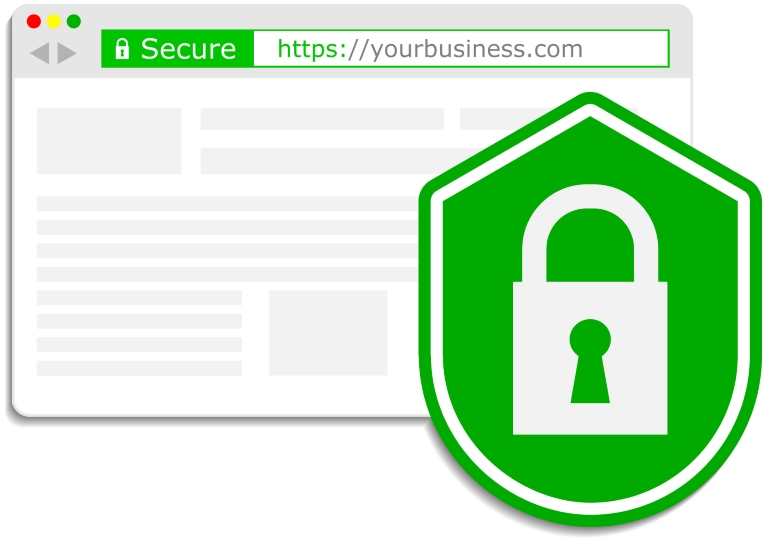Introduction
In the digital age, online security is not just a luxury—it’s a necessity. Websites are constantly under threat from cyberattacks, data breaches, and unauthorized access. One of the most critical components of online security is the SSL (Secure Sockets Layer) certificate, which encrypts data and ensures secure communication between a user’s browser and your website. However, having an SSL certificate is just the beginning. Without continuous monitoring, an SSL certificate can become a liability rather than an asset.
This guide will explore the importance of SSL monitoring, how it enhances website security, best practices for implementation, and the tools that can help you manage SSL certificates effectively.
Why SSL Monitoring is Crucial
Ensuring Data Integrity
SSL certificates encrypt data transferred between a website and its users, protecting sensitive information such as passwords, credit card numbers, and personal data from being intercepted by malicious entities. However, if an SSL certificate expires or is not properly configured, this data can become vulnerable.
- Preventing Man-in-the-Middle Attacks: SSL monitoring helps prevent man-in-the-middle (MITM) attacks by ensuring that certificates are always valid and properly configured.
- Maintaining Data Integrity: Regular monitoring ensures the ongoing integrity of data transmitted through your website.
Protecting Your Brand Reputation
An expired or misconfigured SSL certificate can lead to browser warnings, driving away potential customers and damaging your brand’s reputation.
- Avoiding Browser Warnings: Continuous monitoring ensures that SSL certificates do not expire unnoticed, avoiding browser warnings that could deter users.
- Building Customer Trust: A secure website builds customer trust, which is crucial for business success and customer retention.
Staying Ahead of Security Threats
SSL monitoring helps organizations stay ahead of potential security threats by continuously scanning for vulnerabilities.
- Detecting Misconfigurations: Regular scans can detect SSL misconfigurations and outdated protocols that could be exploited by attackers.
- Responding to Emerging Threats: Monitoring helps you respond quickly to new threats, reducing the risk of a security breach.
How SSL Monitoring Works
Automated Scanning and Alerts
SSL monitoring involves automated scanning of SSL certificates to detect potential issues such as expiration, misconfiguration, or vulnerabilities.
- Scheduled Scans: Regularly scheduled scans detect SSL certificate issues before they impact website security.
- Real-Time Alerts: Immediate alerts are sent to administrators when a potential issue is detected, allowing for quick resolution.
Certificate Chain Validation
SSL monitoring tools validate the entire certificate chain to ensure that all certificates, from the root to the end-entity, are trusted and valid.
- Checking Certificate Authority (CA) Validity: Verifies that the certificate authority issuing the SSL certificate is trustworthy and not compromised.
- Intermediate Certificate Checks: Ensures that intermediate certificates in the chain are also valid and not revoked.
Vulnerability and Configuration Checks
Monitoring tools scan for SSL vulnerabilities, such as outdated encryption algorithms or weak cipher suites, and check that SSL certificates are configured according to best practices.
- Outdated Encryption Detection: Identifies weak encryption algorithms that should be updated to maintain security.
- Configuration Audits: Checks for best practices in SSL configuration, such as proper key sizes and protocol versions.
Benefits of Implementing SSL Monitoring
Enhanced Security Posture
SSL monitoring strengthens your website’s security posture by ensuring that all certificates are up to date and properly configured.
- Continuous Protection: Provides continuous protection against threats related to expired or compromised SSL certificates.
- Proactive Security Management: Allows for proactive management of security measures, reducing the risk of a breach.
Improved Compliance with Regulations
Many industries are subject to regulations that require the use of SSL certificates and regular monitoring to protect user data.
- Meeting Regulatory Standards: Helps organizations comply with regulations such as GDPR, HIPAA, and PCI DSS by ensuring that SSL certificates are properly managed.
- Avoiding Fines and Penalties: Regular monitoring reduces the risk of non-compliance and associated fines or penalties.
Cost-Effective Risk Management
SSL monitoring is a cost-effective way to manage security risks by preventing potential breaches and the costly aftermath of a cyberattack.
- Reduced Risk of Financial Loss: Prevents financial loss associated with data breaches, such as legal fees, fines, and loss of revenue.
- Lower Operational Costs: Minimizes the need for emergency repairs and reduces downtime, saving time and money.
Best Practices for SSL Monitoring
Regularly Review SSL Configurations
Regularly reviewing and updating SSL configurations ensures that your certificates remain secure and effective.
- Update Outdated Protocols: Replace outdated encryption protocols with more secure options to prevent vulnerabilities.
- Conduct Regular Configuration Audits: Perform regular audits of SSL configurations to identify and fix any issues.
Implement Automated Renewal Processes
Automating SSL certificate renewals ensures that certificates are always valid and reduces the risk of expired certificates.
- Set Up Automatic Renewals: Configure SSL certificates to renew automatically to prevent expiration.
- Use Certificate Management Tools: Utilize tools that provide automated management and renewal of SSL certificates.
Monitor All Certificates Across Your Network
Ensure that all SSL certificates, including those on subdomains and different servers, are monitored to maintain a secure network.
- Centralize Certificate Management: Use a centralized platform to manage and monitor all SSL certificates from a single interface.
- Monitor Wildcard and Multi-Domain Certificates: Regularly check wildcard and multi-domain certificates to ensure they cover all necessary subdomains.
Top SSL Monitoring Tools
Entrust Certificate Services
Entrust Certificate Services provides comprehensive SSL monitoring and management capabilities to ensure your certificates remain secure and up to date.
- Automated Certificate Management: Automates the management and renewal of SSL certificates, reducing the risk of expiration.
- Real-Time Alerts and Notifications: Sends real-time alerts and notifications for potential issues, allowing for quick resolution.
SSL.com Certificate Manager
SSL.com offers a robust certificate management tool that includes SSL monitoring, automated renewals, and vulnerability scanning.
- Comprehensive SSL Monitoring: Provides comprehensive monitoring of SSL certificates, including expiry, configuration, and vulnerability checks.
- User-Friendly Interface: Features a user-friendly interface for easy management of SSL certificates across multiple domains.
Sectigo Certificate Manager
Sectigo provides a powerful SSL certificate management platform that simplifies SSL monitoring and ensures continuous website security.
- Advanced SSL Monitoring Capabilities: Offers advanced monitoring capabilities, including automated scans and real-time alerts.
- Centralized Management Dashboard: Provides a centralized dashboard for managing and monitoring SSL certificates across multiple websites.
Overcoming Common Challenges in SSL Monitoring
Managing SSL Certificates at Scale
Managing SSL certificates at scale can be challenging for organizations with multiple websites and subdomains.
- Utilize Automated Tools: Leverage automated tools for SSL management to handle large numbers of certificates efficiently.
- Implement Centralized Management Solutions: Use centralized management solutions to streamline the process and ensure consistency.
Handling Expired or Misconfigured Certificates
Expired or misconfigured SSL certificates can lead to browser warnings and loss of user trust.
- Set Up Automated Alerts: Set up automated alerts to notify administrators before SSL certificates expire.
- Regularly Check Configurations: Regularly check SSL configurations to ensure they are properly set up and secure.
Keeping Up with Security Best Practices
The security landscape is constantly evolving, and staying up to date with best practices is essential for maintaining website security.
- Continuous Training and Education: Provide continuous training and education for IT and security teams on the latest SSL/TLS vulnerabilities and best practices.
- Regular Security Updates: Ensure that SSL certificates and associated security measures are regularly updated to address new threats.
Conclusion
SSL monitoring is a critical component of maintaining website security, protecting user data, and ensuring compliance with security standards. By implementing a comprehensive SSL monitoring strategy, organizations can enhance their security posture, build user trust, and mitigate the risks associated with SSL certificate management.
Call to Action:
Don’t wait until a security breach occurs—start monitoring your SSL certificates today. Choose the right tools and implement best practices to keep your website secure, compliant, and trustworthy. Protect your online presence and secure your users’ data with effective SSL monitoring.















